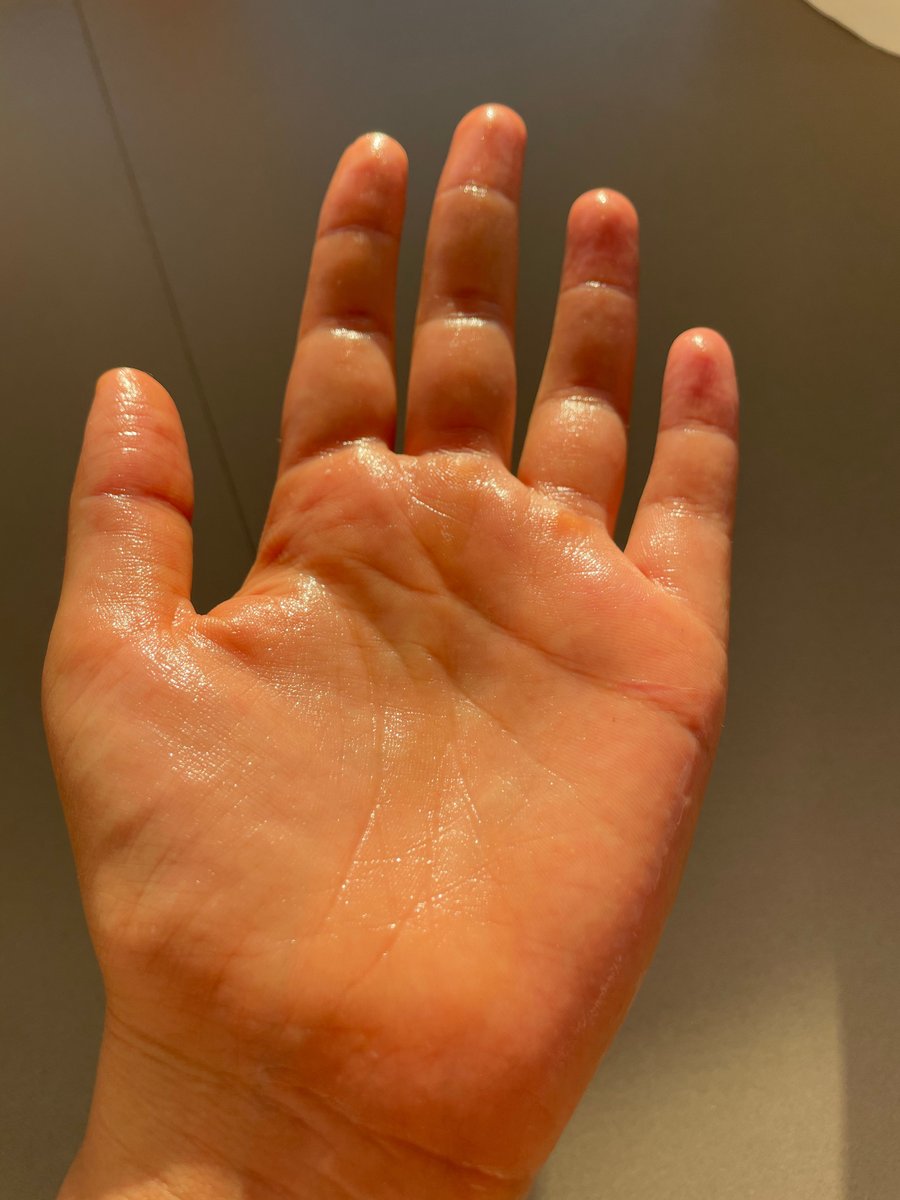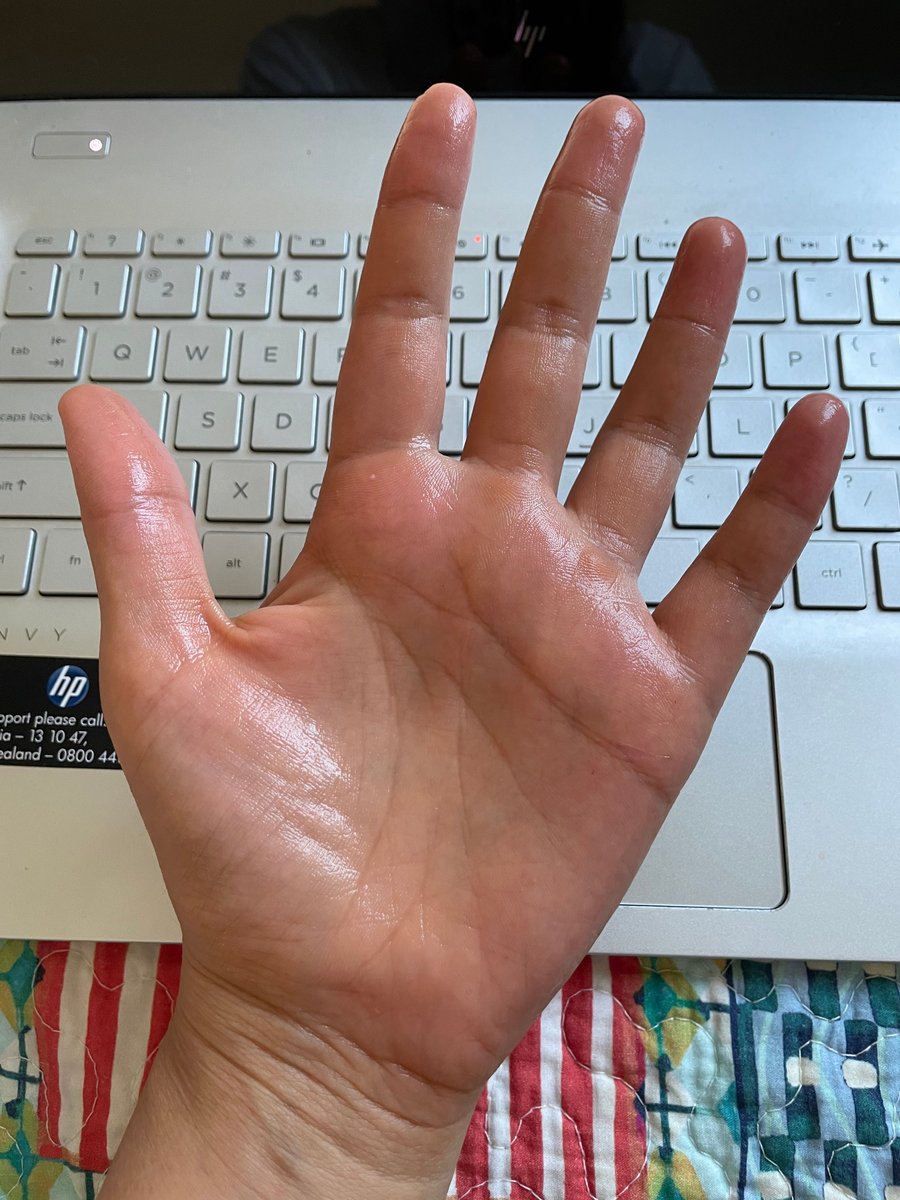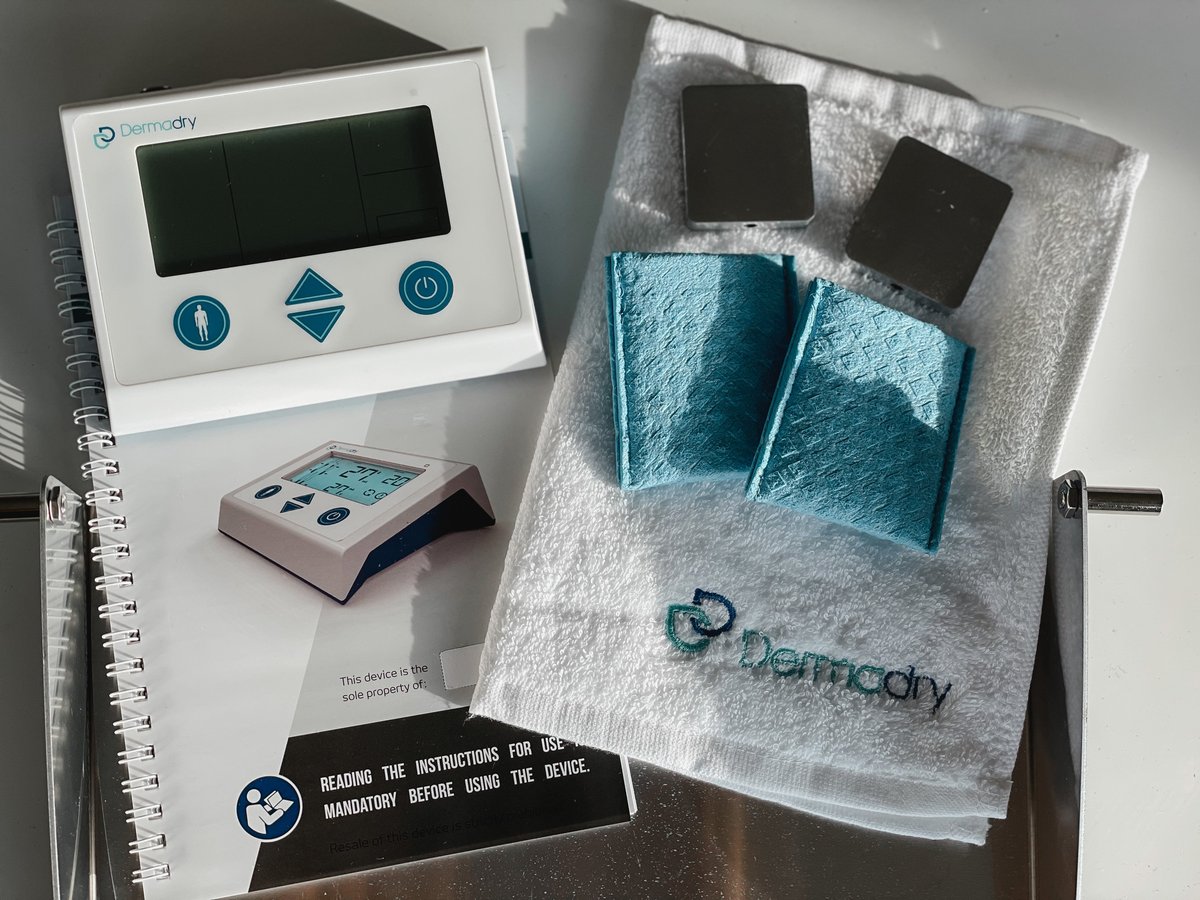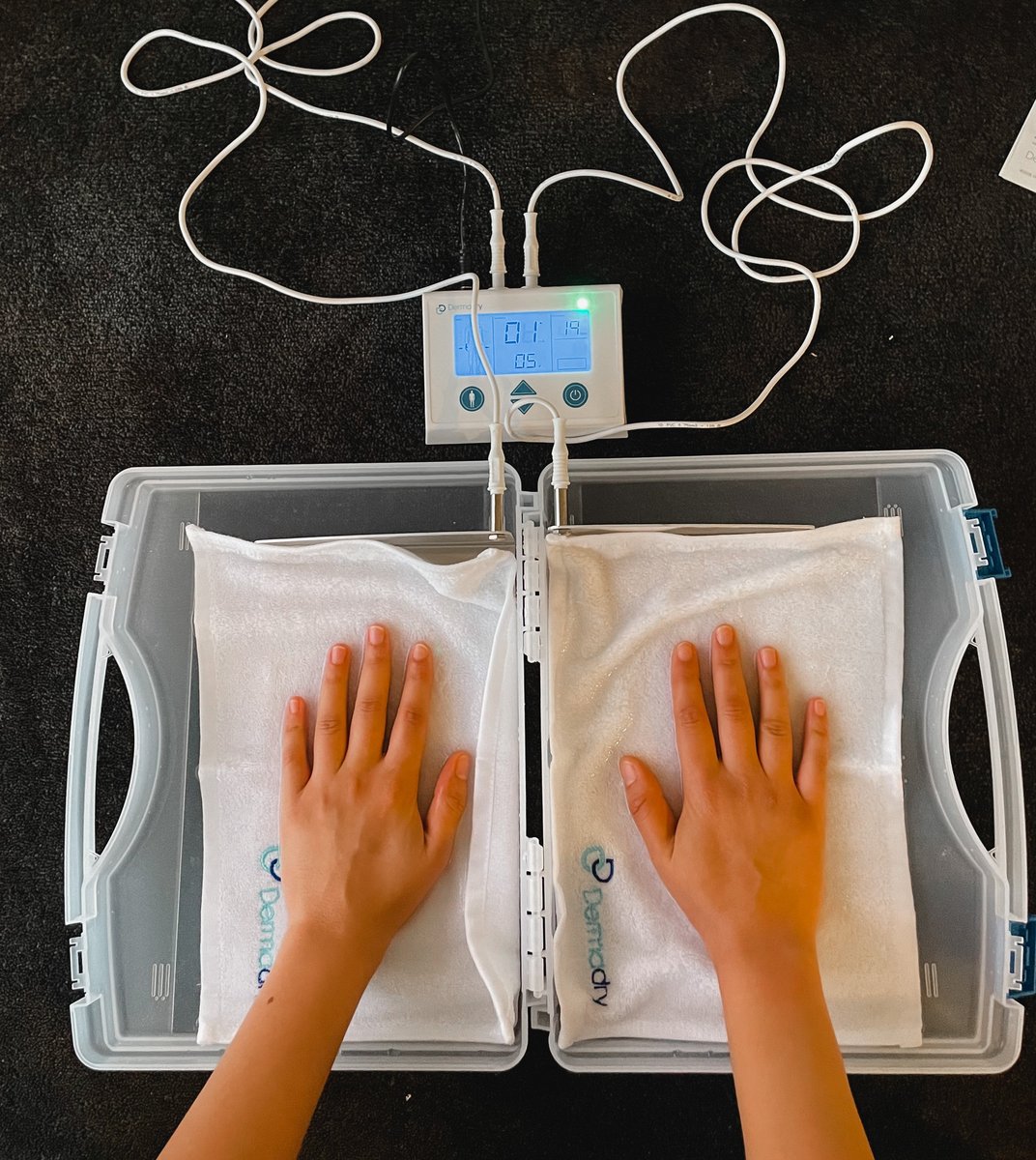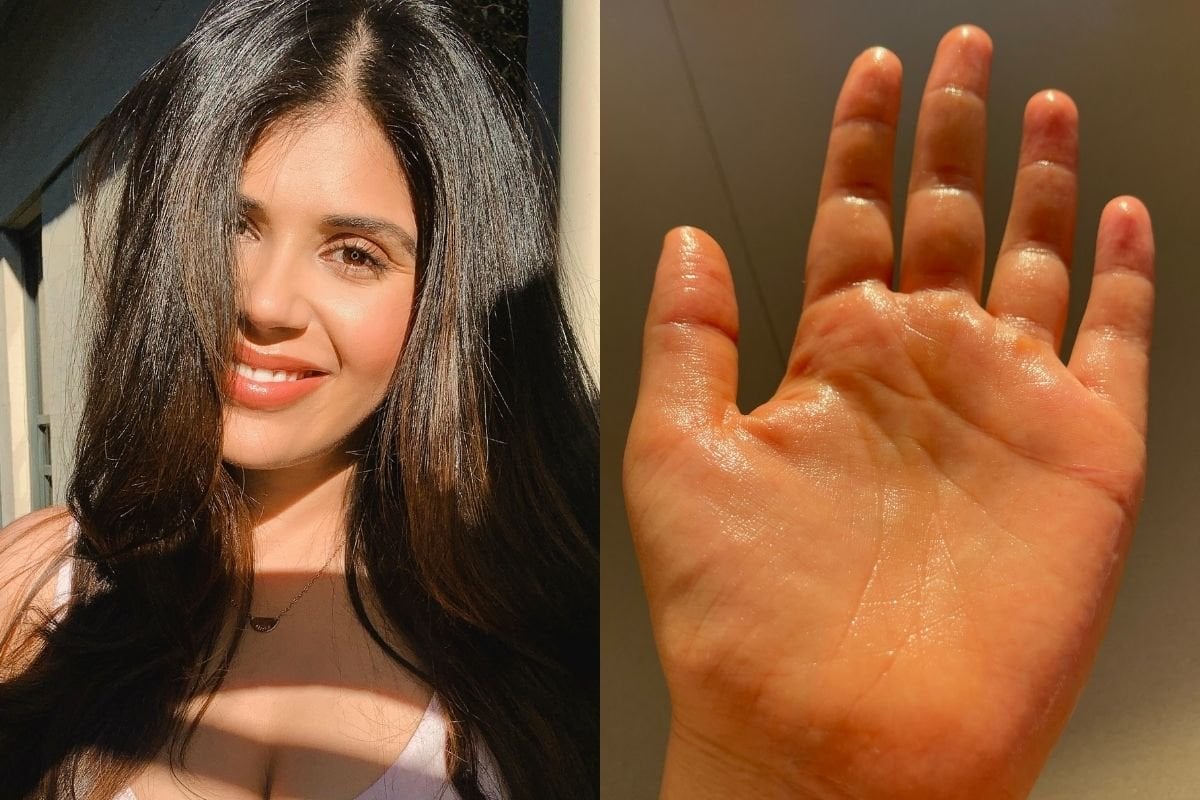
Hands up if you’ve ever been personally victimised by your sweat?
*Raises hand*.
Keep your hand raised if that has happened to you 365 days a year for the last 15 years.
Welcome to my life, living with hyperhidrosis.
For those who aren’t familiar with the term, it’s a medical condition characterised by excessive and uncontrollable sweating without physical exertion or increase in body temperature.
Watch: Here's what your horoscope looks like working out. Post continues below.
If you’re confused and sitting there thinking 'but isn’t sweating crucial to keep us cool?' then yes, you’re right. Our sweat glands play an important function to regulate our body temperature and for many people the nervous system does just that.
But for 5 per cent of the world’s population (roughly 365 million people), their sweat glands don’t shut off... meaning that people who have hyperhidrosis sweat when there is literally no reason to sweat.
I’m talking about sweating in air-conditioned rooms, the middle of winter and even while swimming at the beach.
To put this into context, each of us have two to four million sweat glands distributed all over our body and if that switch never turns off... damn, that’s a whole lotta sweat.
